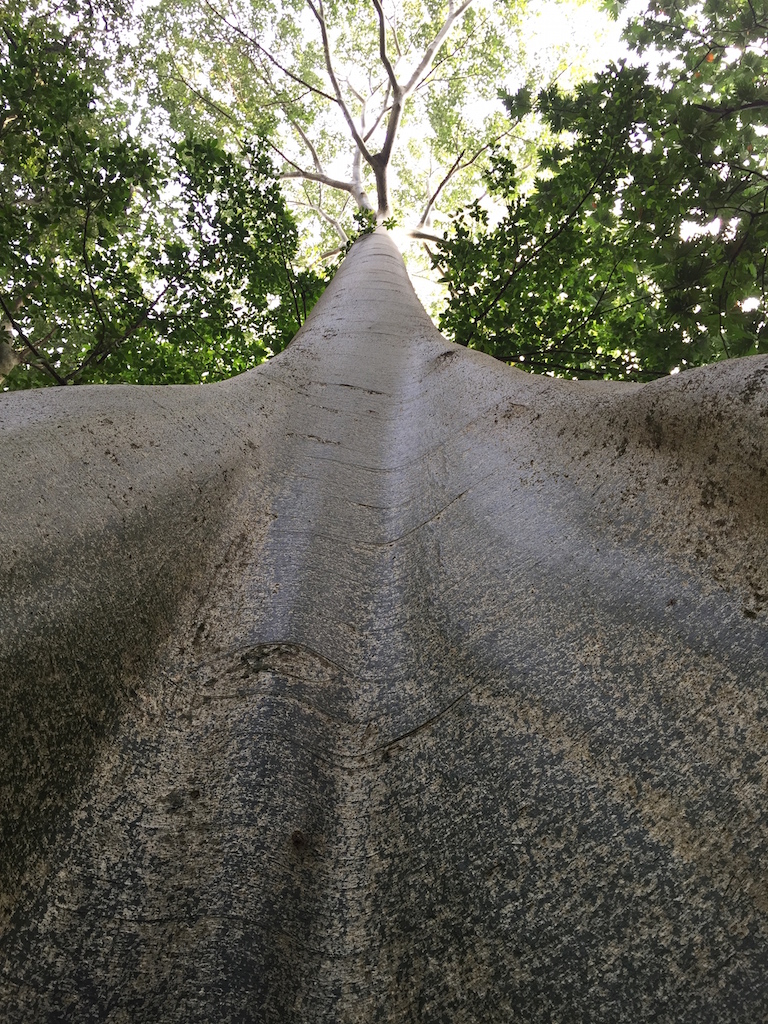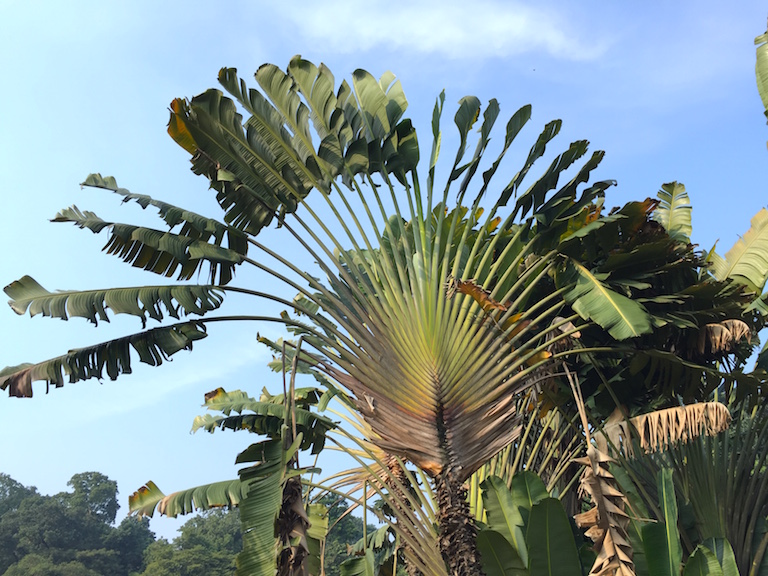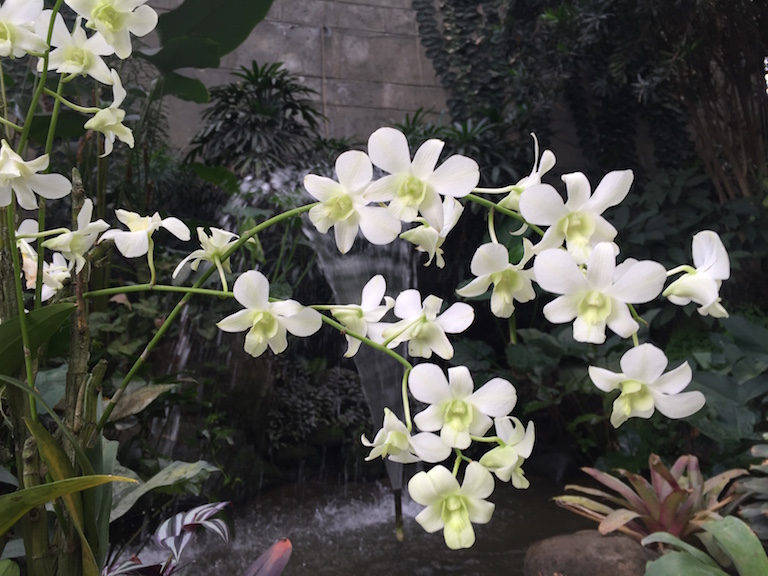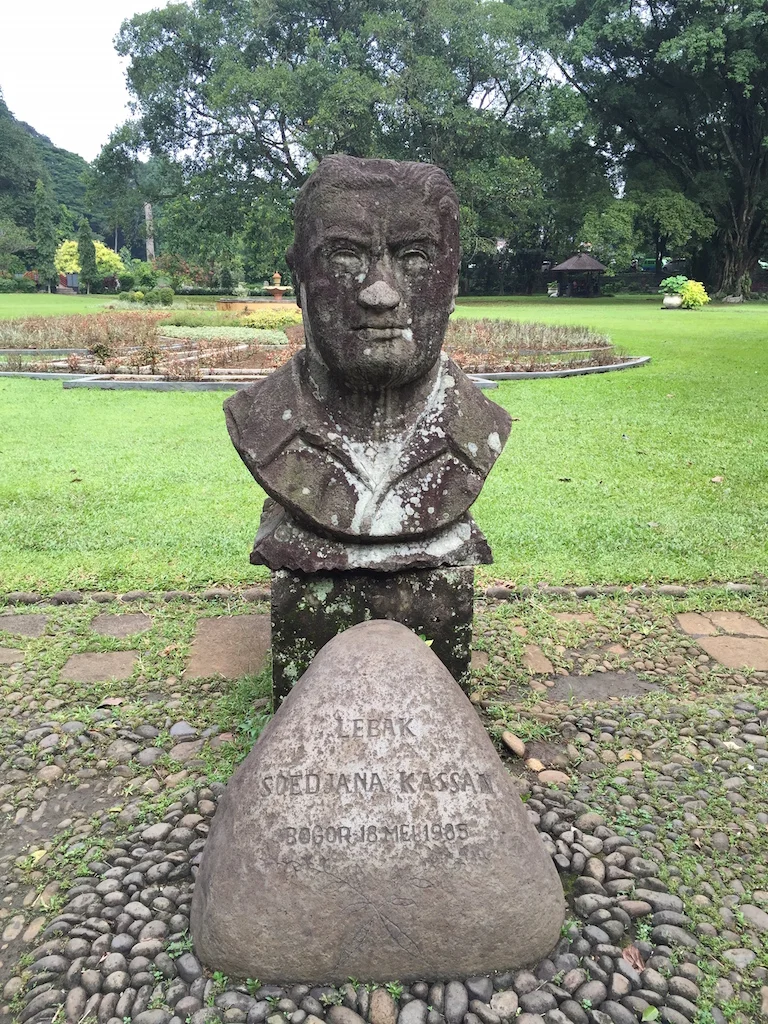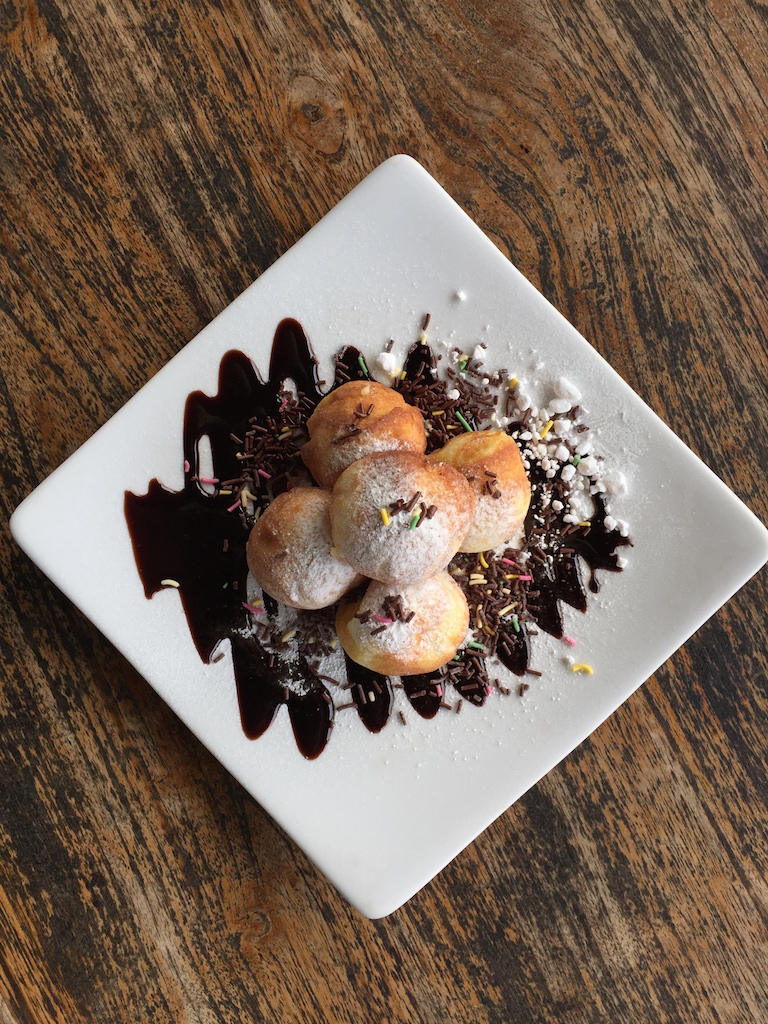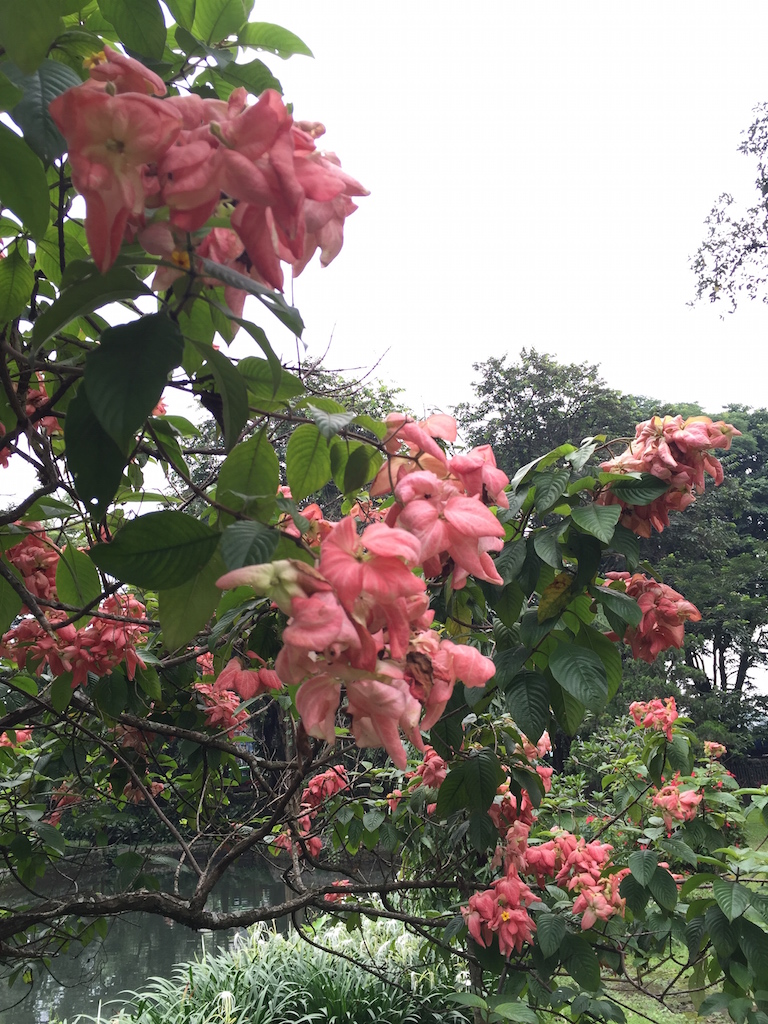Green Spaces in Jakarta (and Beyond) #4 - The Bogor Botanical Gardens
Located approximately 60km south of Jakarta, The Bogor Botanical Gardens (Bogor Kebun Raya) is situated in the City of Bogor and makes for an easy and worthwhile getaway from the hustle and bustle of Jakarta life.
Having visited The Botanical Gardens twice mid-week over the past 6 weeks, I was surprised to find how quickly we arrived at our destination. On both occasions we left home in Jakarta’s southern suburbs around 7am and arrived at The Gardens comfortably within an hour.
A vertical perspective of a mighty tree belonging to the Ficus species
About Bogor Botanical Gardens
Apart from being a lovely green space in which to relax and unwind, The Bogor Botanical Gardens are also a very important centre for plant conservation; renowned for research into regional flora. The Gardens are Indonesia's most significant, consisting of 87 hectares of manicured garden beds, grassy expanses and rare trees and plants. In additional to this, there exists 28 hectares of grounds in the north-western corner in which the Presidential Palace (Istana Bogor) is situated.
An open grassy space near the Garuda Garden, Bogor Botanical Gardens
Operated by the Indonesian Institute of Sciences, The Bogor Botanical Gardens showcases almost 14000 different kinds of trees and plants of various origin belonging to 3373 species, 1257 genera and 218 families. There are 288 species of palms on display, alone.
One of the many majestic fan palms
Numerous specialist areas can be enjoyed, some including:
Orchid House- Separated into hybrid and non-hybrid orchid species.
Gunting Pond - Most famous for the Victoria Amazonica Water Lilies (the largest of the water lilies), which have leaves up to 3 metres in diameter.
The Gunting Pond featuring the World's largest Water Lilies, (Victoria Amazonica Water Lilies)
The seeds for the original Victoria Amazonica lilies were sent to the Bogor Botanical Gardens from the Amsterdam Botanical Gardens in 1860
The Mexican Garden - A small patch of the botanical garden is dedicated to desert plants. There are roughly 100 species of cactus, agave, yucca and succulent plants from around Asia and the Americas.
Medicine Garden - This section of the garden contains plants that are commonly used for medicine ingredients and herbalism. Plants are separated into different sections according to their size and species.
Citrus Garden - A citrus grove with many varieties of Citrus from the World over.
Early History of The Bogor Botanical Gardens
Caspar Georg Carl Reinwardt is considered to be the Founding Father of The Bogor Botanical Gardens. Reinhardt was a Prussian-born Dutch Botanist and in 1816 was offered the position as Head of Agriculture, Arts and Science of the Colony. Reinhardt travelled to The East Indies (the islands of South East Asia, especially the Malay Archipelago), where he conducted various botanical investigations throughout the lands. In 1817 Reinwardt was named the Founder and Director of the Botanical Gardens of Bogor (Buitenzorg), making The Bogor Botanical Gardens the oldest Gardens in South East Asia. During this time Reinhardt cultivated various flora from the surrounding islands of Timor, The Moluccas, and Sulawesi.
One of the many statues in The Bogor Botanical Gardens that reference the Dutch involvement in the establishment of the original gardens
Around the same time, Great Britain was successful in its invasion of Java resulting in a gentleman by the name of Sir Thomas Stamford Raffles being appointed as Java's Lieutenant-Governor. Raffles took the Buitenzorg Palace as his residence and subsequently commissioned the re-landscaping of the Buitenzorg Gardens into English-style gardens.
The tribute garden to Soedjana Kassan, who was curator of The Gardens during the mid 1900's
In 1959 Kusnoto Setyodiworjo became the first Indonesian curator of the Gardens and eventually became the Director of the Gardens. From 1959 - 1964 Soedjana Kassan was Head of The Bogor Botanical Gardens and a garden built to commemorate Kassan is located in the north-eastern corner of The Gardens.
Suggested Activities in The Gardens
Make the most of the vast open spaces, (mostly) well-paved paths and minimum traffic* by walking, jogging, engaging in tai chi, cycling or riding a scooter. Why not bring a book, pack a picnic or simply chill out and enjoy the open spaces and beautiful green surroundings.
*(Note: cars and motorcyles are permitted to drive on the main road that bisects the garden)
Taking a stroll
Bogor Botanical Gardens are the perfect place to clock up a few km's
The Gardens are a great place for a bike ride as the paths are mostly flat (with some occasional gentle inclines)
Occasionally you will encounter a bumpy surface and pushing that scooter will be your only option..
Amenities
Mostly level, well-constructed paths, plenty of parking, Masjid (prayer room), The Grand Garden Cafe with Indonesian and Western menu options and clean Western-style toilets.
Other recommendations
* If possible, visit during the week, especially if you are coming from Jakarta to avoid delays with traffic.
* Wear mosquito repellent as we encountered some hungry mozzies that were keen to feast on us!
* Arrive early! Be ready to enter the gates at 8.00am, allowing you more time to have the park to yourself and also to avoid the heat of the day.
* Keep children entertained for longer by bringing their bike/scooter and helmet.
* Bring a hat and light, long layers of clothing to avoid being bitten by mosquitoes and to minimise sun exposure.
Garden Recommendations
On the two occasions we visited The Bogor Botanical Gardens, we relaxed at the end of our walk with a visit to The Grand Garden Cafe.
We enjoyed eating: Poffertjes, French Fries, Chicken Wings, Tom Yum soup and Nachos.
Poffertjes - Little Dutch pancakes dusted with icing sugar and served with chocolate sauce and sprinkles
French Fries - Served with chilli sauce and tomato ketchup
We enjoyed drinking: Cappuccino, Lemon Iced Tea, Sprite, Coca Cola, Lemon Squash, Lychee Tea and Orange Paradise.
Cappuccino anyone?
Orange Paradise, Lemon Iced Tea, Lemon Squash and Lychee Iced Tea
Interesting facts about some of the plants found at The Bogor Botanical Gardens
Gogo Vines (Pohon Tarzan)
Gogo vines are woody vines found in the lowland forests throughout the tropics of South East Asia and Africa. Gogo Vines are often referred to as 'Tarzan Trees' due to their strength and similar appearance to the vines used by Tarzan in the movie of the same name. Gogo Vines produce pods which are up to 1 metre long and contain 20 seeds. The seeds, vine and seed pods are used for making traditional medicine, soap, jewellery and also for fish poison.
Oil Palm Trees (Elaeis guineensis)
In 1848 four Oil Palm Trees were introduced to Java from Guinea, West Africa. These plants were cultivated at The Bogor Botanical Gardens and are the parent plants for all existing Oil Palm Trees in Indonesia.
Handkerchief Tree (Pohon Saputangan Jambon)
The unusual Handkerchief Tree has a show of flower-like leaves that fall like the soft fabric of a handkerchief. What appears to be flowers are in fact the young leaves of the tree. Over time these leaves harden and become green. The Handkerchief Tree is native to Northern Australia, Torres Strait Islands and Papua New Guinea.
Hankerchief flower tree
Corpse Lily/Corpse Flower (Rafflesia)
In 1818, the first Rafflesia was found in the Indonesian Rainforest by an Indonesian guide working for Dr. Joseph Arnold. The Rafflesia was subsequently named after Sir Thomas Stamford Raffles, who was the leader of the expedition. Rafflesia do not have roots or leaves and as such are unable to create their own energy via photosynthesis. They are therefore true parasites in nature. Rafflesia are particularly rare and can only be found in the deep rainforests of Sumatra, Kalimantan and Java.
Cinchona Tree
Between 1852 and 1854 The Garden played an important role in the introduction of quinine to Java; an extract used to treat malaria. Quinine is produced from the bark of the Cinchona (Rub.) tree, originally from Peru.
Bogor Botanical Gardens
Jl. Ir. H. Juanda No. 13
Bogor
Indonesia
Email: Bogor Botanical Gardens
Cost: Rp130,000 for 4 people (including car access)
Opening Hours: 8.00am - 5.00pm
Looking for more Green Spaces to visit around Jakarta? Check out our stories on the following:
Taman Honda Tebet
Taman Suropati
Taman Menteng
Words: Jo Stevens Photography: a journey bespoke



